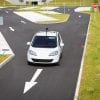Google has been experimenting with driverless cars for several years now, releasing the vehicles onto streets in cities as small as Ann Arbor, Michigan and as large as Los Angeles, California. At the recent Detroit Auto Show, Google also spotlighted a minivan with self-driving sensors and vision systems.
Waymo, the autonomous car company Google spun off as its efforts advanced, has partnered with Fiat Chrysler to develop the driverless cars. The company has also focused on developing a package of self-driving equipment that can be installed on already-existing vehicles. Other Detroit automakers, including General Motors and Ford, also claim to be developing their own driverless vehicle technology – and have made promises to manufacture the results in Michigan.
However, the rise of self-driving vehicles raises a number of legal questions. How will such vehicles be regulated to ensure their safety? What features in a self-driving vehicle should be required, and which should be optional? How will auto insurance companies cover self-driving vehicles? Who is responsible if a self-driving vehicle crashes – or if it causes serious injuries?
Federal guidance on the issue includes a Preliminary Statement of Policy from the NHTSA, and an interpretation from NHTSA of the Federal Motor Vehicle Safety Standards as they might apply to a driverless vehicle, which was undertaken on Google’s request. The Fixing America’s Surface Transportation (FAST) Act, which was signed into law in December 2015, also contains provisions that address certain concerns.
Since 2013, the Texas legislature has considered five separate bills addressing the use of driverless vehicle technology. Four were introduced in the state House and one in the state Senate. Unfortunately, every single bill was held up in committee, meaning none of them ever reached a vote. Texas remains one of several states with no state law addressing driverless vehicles.
Questions about accidents are not mere speculation. To date, Google’s self-driving vehicles have been involved in over a dozen accidents. Although human drivers who crashed into a Google car caused most of these accidents, questions remain as to how bills and liability should be handled, especially in “no-fault” insurance states (where each insured driver typically turns to his or her own policy for coverage first).
